By Julie Daines
I keep hearing people talk about descriptive narrative as though it's something different from internal dialogue. I suppose if you're writing some kind of literary fiction from an omniscient POV, it might be. But for the most part--especially in children's and YA fiction--it is the same thing.
Interiority and description are the same. It's all in the POV voice. It's all about what the POV character is thinking. Sometimes they're thinking about their feelings and motivations, sometimes they're thinking about what they're seeing/hearing etc.
All of it needs to be written from the mindset of the POV character.
Remember this poem by Wordsworth?
Viewing: Blog Posts Tagged with: Voice, Most Recent at Top [Help]
Results 26 - 50 of 199
Blog: Utah Children's Writers (Login to Add to MyJacketFlap)
JacketFlap tags: narration, Julie Daines, voice, description, Add a tag
Blog: Kidlit Contest (Login to Add to MyJacketFlap)
JacketFlap tags: Writing, Character, Voice, Add a tag
Thank you everyone for your kind words about the wedding pictures. I hope that everyone had a restful and invigorating Thanksgiving celebration with loved ones! Now, unfortunately, it’s time to get back to business. There’s something I touch upon a little in my book that I want to discuss it in more detail: melodrama.
Sometimes I’m cruising along in a story and I encounter melodrama. It can happen in interiority, description, or the overall prose. Here are some examples:
My heart dashed into a million jagged pieces as thoughts of betrayal swirled like a thunderhead in my frazzled mind.
I cried out, my breath rasping, my voice desperately pleading, “No!”
He snapped his neck toward me, his eyes laser-beaming me with an intense glare. “Leave. Now.”
It’s actually quite tortuous for me to write this way. There’s not a whole lot that bothers me more in prose. Melodramatic writing works so hard to convey emotion that it goes completely over the top. You may be guilty of it if you’ve developed a finely tuned adjective thesaurus. Or if you have a lot of physical clichés in the work. Or if you’re taking great pains to describe a tone of voice.
Melodrama is going above and beyond to hammer home a certain emotion. It almost always reads as false to me. Here’s my real issue with it. Real drama comes when a reaction matches the situation or stimulus. If I stub my toe, I swear a few times under my breath and walk it off. If my car rolls down the driveway and into the lake, I will swear…well, not a few times. But if I stub my toe and I’m on the ground, moaning and wailing and thrashing around, then the magnitude of reaction doesn’t match the situation.
Most of the time, when melodrama strikes me as especially fake, it’s because of this disconnect. If a situation is not particularly intense because there’s not enough tension or the stakes aren’t high enough, but the writer is trying their best to make it seem intense: melodrama. Whenever you see a lot of purple prose coming to the party, you’re likely trying to create a mountain out of a molehill.
But tension isn’t created with a lot of over-the-top adjectives. It’s created when a situation puts a character further away from what they want. So if that tension isn’t naturally there through how you’ve set up your characters and plot, you might find yourself (even if it’s subconsciously) compensating by tying on the window dressing of intense descriptions and heavy physicality. Instead, ask yourself if you’ve created adequate objectives for your character, and whether or not you’re frustrating them in an effective way.
Remember, your characters shouldn’t get to win that often. Struggle and frustrated desires are par for the course with a plot that’s going to really challenge your character. This is not the same thing as a superficial wound that sets your protagonist into a histrionic hissy fit. Where there’s intense emotion, there should be intense tension underlying it, and a real cause for concern that’s driving your character crazy. (Even if you have a really good set-up for a dramatic reaction, you may want to play it more reserved, to begin with. The sooner writers wean themselves off of purple prose, the better.)
If you’re worried that maybe you more flamboyant writing style is coming across as melodrama instead of desirable tension/conflict, ask your critique partners if a scene ever starts to feel fake or over-the-top. This is a very serious issue. Despite teens and kids getting a bad rap for being melodramatic in their personal lives, they are also really good at sussing out what’s authentic and what isn’t. You don’t want a flare-up of dramatics to alienate the reader.
Add a CommentBlog: Darcy Pattison's Revision Notes (Login to Add to MyJacketFlap)
JacketFlap tags: character, voice, Plot, theme, setting, Novel Revision, revise novel, online video course, stronger novel, Add a tag
NOW AVAILABLE! 30 Days to a Stronger Novel Online Video Course
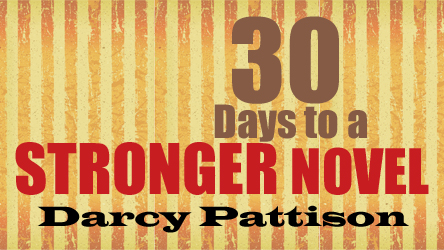
- Paperback Book Available now.
- Video Course Available now.
- Kindle PreOrder Now
- Kobo ebook PreOrder Now
The course is now live on Udemy.com!
Each day includes:
- A quote that inspires
- Short, practical instruction from Darcy on a specific topic
- A simple “Walk the Talk” action to take
 Over the course of the month, you’ll receive the entire text of Darcy’s book, 30 Days to a Stronger Novel (November, 2014 release).
Over the course of the month, you’ll receive the entire text of Darcy’s book, 30 Days to a Stronger Novel (November, 2014 release).
We can’t guarantee that you’ll end the month with a publishable novel; but we can guarantee it will be a STRONGER novel.
VIDEO COURSE TABLE OF CONTENTS
- Watership Down with Armadillos: Titles
- Search Me: Subtitles
- Defeat Interruptions: Chapter Divisions
- Scarlett or Pansy: The Right Character Name
- My Wound is Geography: Stronger Settings
- Horse Manure: Stronger Setting Details
- Weaklings: Every Character Must Matter
- Take Your Character’s Pulse
- Yin-Yang: Connecting Emotional and Narrative Arcs
- Owls and Foreigners: Unique Character Dialogue
- Sneaky Shoes: Inner and Outer Character Qualities
- Friends or Enemies: Consistent Character Relationships
- Set Up the Ending: Begin at the Beginning
- Bang, Bang! Ouch! Scene Cuts
- Go Away! Take a Break
- Power Abs for Novels
- White Rocks Lead Me Home: Epiphanies
- The Final Showdown
- One Year Later: Tie up Loose Ends
- Great Deeds: Find Your Theme
- The Wide, Bright Lands: Theme Affects Setting
- Raccoons, Owls, and Billy Goats: Theme Affects Characters
- Side Trips: Choosing Subplots
- Of Parties, Solos, and Friendships: Knitting Subplots Together
- Feedback: Types of Critiquers
- Feedback: What You Need from Readers
- Stay the Course
- Please Yourself First
- The Best Job I Know to Do
- Live. Read. Write.
Discount Code
Sign up now and receive $5 discount. Use this code: 5OFF30Days
Blog: TWO WRITING TEACHERS (Login to Add to MyJacketFlap)
JacketFlap tags: voice, writers, Add a tag
Blog: Just the Facts, Ma'am (Login to Add to MyJacketFlap)
JacketFlap tags: voice, Add a tag
It's hard to define voice in writing, but we recognize it when we read it.
http://www.adventuresinyapublishing.com/2014/07/what-is-voice-in-fiction.html
Blog: Inkygirl: Daily Diversions For Writers (Login to Add to MyJacketFlap)
JacketFlap tags: voice, trends, Craft of writing, justinchanda, Add a tag

Love this quote.
Debbie
Blog: HOOK KIDS on READING (Login to Add to MyJacketFlap)
JacketFlap tags: masterpiece, mid-grade, ingredients, # margot finke, chapter hooks, writing knowledge, SCBWI, writing process, voice, Add a tag
Ain't Easy!
Originally posted in The Purple Crayon – on "Musings"
by Margot Finke
- Tight writing.
- Active and powerful verbs.
- A plot that’s cool and fast paced.
- Characters who are alive with authenticity.
- Dialogue that is true to the characters.
- A background rich with possibilities or mystery.
- Your own unique writing voice.
- Hints and clues that are woven into the fabric of the plot, and tell of past history and things yet to come.
- End of chapter HOOKS that keep readers turning the page.
Ingredients — How and Where to Find Them:
- If it’s been a long time since you sat in Mrs. Learnit’s English class, take a basic English/Writing course. You can do this online, through a nearby night class, or your local college. Writers must have confidence in their basic grammar and punctuation skills.
- Haunt your local bookstores and library. Read every middle-grade book you can get your hands on. Dissect the plots in these books, and the way authors create their characters. Look at the sentence structure, the way they describe events and places. Make notes. If a book grabs your interest, find out what it is the author does that has that effect on you. Is it their richly crafted characters, their sharp and fast moving plot, or their attention to all those small yet vital details?
- Write as often as you can. Becoming a published author is not for wimps or hobbyists. Sacrifices are mandatory. If it means getting up before dawn, because that is the only time you have to write — so be it. If it means being bleary-eyed at 2 am so you can finish a chapter — suck it up! If it means living with dust bunnies that make your mother-in-law cluck, and teaching your kids to do their own laundry and room clean up — go for it! Most important is a partner who is sympathetic toward your (weird to his mind) need to write, and his willingness to help out around the house when you are suffering from one of your many writing frenzies. Perfect wife, mother and housekeeper, OR great writer? Both demand masses of time — your choice, mate.
- If you have no middle-grade children in your family, volunteer at your local middle school. Observe these half-baked creatures in their natural habitat. Body language, peer groups, misfits and lunch room behavior: all this is grist for your writing mill. Moreover, you’ll probably have fun doing it. Make a note of what these kids read for pleasure.
- Network with others who write for the same age. This means joining online lists where writing and publishing information flows back and forth, and you can have your many beginner questions answered. Join a critique group that has some advanced or published members. Their support and encouragement will often save your sanity. Critiquing the work of others is surprisingly informative, and you will benefit from the feedback you receive on your own writing. Below are three of many great online lists for children’s writers, and links to join.
- Children’s Writers (Children's Writers & Illustrators)
[email protected] - Children’s Writers Today -
[email protected] - Non Fiction for Kids
[email protected]
If you don’t have a college degree, or even a high school diploma, don’t worry. Talent, perseverance, and a slice of luck can make up for these so-called deficits. A dedicated and talented writer, determined to learn the craft of writing, and stick with it until they become published, will succeed. Boost your writing confidence with an advanced writing class. This will take you beyond grammar and punctuation, and into the meaty realm of plots, character enrichment, voice and pace. Perfect these skills, and acceptances rates multiply like rabbits. Below are three links — two links for great writing classes, and the other to terrific books on how to write for children.
- Recommended Writing Class
- Anastasia Suen — A wonderful writer. If you want to write for children, visit her Intensive
trove of writing information.
- Margot Finke’s World of Writing for Children — See Site Directory for:
Self-editing Tips - Children’s Writing Guide - Link to "Musings" & more.
- Verla Kay's WebSite
A multi published author and a valuable resource site.
- CBC (Children's Book Council)
- Writer's Market Research publishers. They update information regularly. They have a program where you can track submissions, but it cost to join. Writer's Market also has a free update site. You don't have to subscribe to the magazine to get the updates.
- Jan Field's Website
Chock full of writing help, and kidmagwriters.com is a terrific resource for
those who want to write for magazines. - CWIM (Children’s Writer’s & Illustrator’s Market). This hard copy book is the information Bible for publishers, editors, agents, and what they want from
YOU in the current year - LINKEDIN is a place for serious writers. Lots of writing lists for every genre`.
Blog: Kidlit Contest (Login to Add to MyJacketFlap)
JacketFlap tags: Writing, Advice, Voice, Add a tag
This is a note I give a lot in my work with clients. It goes: “Saying something simple in a complicated way.” I know exactly why people do it. But it often has detrimental effects on that one holy grail of writing that people strive for, voice.
For example:
The sky is blue.
The heavens swirl with shades of the purest cerulean.
Yikes. I mean, sure, we want to be remembered for prose that has at least a little bit of flair because our unique authorial voices are what distinguish us from the other guy. At the same time, there’s a delicate balance between substance and style. If style trumps substance, often to the point where the substance is almost unrecognizable, you have a problem. The reader will be lost in your Baroque description and lose the meaning. And that’s not good for their overall focus and, as a result, involvement in your story.
Do I feel like a bit of an idiot writing such inane description as “The sky is blue”? Sure. But sometimes the sky is blue and it needs to be described as blue and the simplest answer is the most difficult: just write “The sky is blue” and move on to developing character or plot.
Why does this bother us so much, as writers? Why do we have to twist ourselves into sentence pretzels and dive into the thesaurus to turn out a description that’s unlike any anyone has ever written?
I call this Writer With a Capital W syndrome. A writer’s trade is her vocabulary, natural voice, and ability to express herself. So writing “The sky is blue” feels like a total cop out. Instead we, especially those beginning writers out there, want to really strut our stuff and prove our worth. We lace the sentence with adjectives or adverbs, we choose really zippy verbs, we labor over every image to make sure that the reader is going to see exactly what we want them to see in their pretty little heads, so help us God. I imagine Writers With a Capital W have a lot of steam coming out of their ears after all that darn concentration.
The thing is, though, sometimes it’s okay to loosen the reigns a bit and let the scene we’re creating speak for itself. Our imagery and writing prowess doesn’t need to be on display every second. In fact, that demands a lot of the reader and tends to skew focus away from the story we’re telling. And that, at the end of the day, is the heart of it. Substance needs to trump style. Not all the time, but a lot.
If you’ve ever been accused of trying too hard, purple prose, overwriting, or not killing your darlings, listen up. There’s no shame in simplifying it a bit and letting the content of the sentence, not the flair with which it is written, stand out. In fact, it may be a welcome break from all that wordsmithing!
Sealed with a KISS (Keep It Simple, Stupid!),
Mary
Blog: Kidlit Contest (Login to Add to MyJacketFlap)
JacketFlap tags: Description, Writing, Voice, Add a tag
There are some elements of life which do not translate well to onto the page. Lately, I have been noticing that descriptions of looks and voices tend to leave me underwhelmed in fiction. You know the ones, and you probably all have them in your manuscripts: the withering glances, the pointed glares, the exasperated grumblings, the strained, tense utterances… All of these add color and emotion to characters, usually in scene.
My theory on them, frustrating as it is, boils down to: some things are better in life or the screen. If the eyes are the windows to the soul, that means various looks and glances are the ultimate body language. And tone can wildly alter the meaning of a conversation. Have you ever said something innocent via text message or email, only to have your recipient completely take it the wrong way? You may have been thinking the offending chat in a silly tone of voice, but it probably came off as snarky or passive-aggressive to the reader. That conversation usually ends in, “Ugh, it’s so hard to do nuance via text/email/IM!”
The adage, “A picture is worth a thousand words,” comes to mind. Some things are simply to intricate to lend themselves well to word-based description. And I’m starting to think that looks and tone of voice are better left for interpersonal interaction and the film or TV medium. As humans, we can usually “read” the emotions of another by interpreting body language, gesture, tone, or a certain “look” your partner has. When you try to put this on the page, you’re taking the energy and movement out of it, which also saps the life.
Of course, the less you rely on describing looks and tone of voice, the harder your job as a writer becomes. You can no longer take the usual shortcut of “she glared in his direction” to express her displeasure. You must now have her perform an action which communicates her dark mood, or she must say something in dialogue (the star of scene, after all) that clues the reader in to what’s really going on. Same with tone of voice.
When you write, for example…
“We’ll see you tomorrow morning,” he said in a menacing tone.
…you are taking a shortcut. It’s not the end of the world, but it’s still a shortcut. Why? Because ideally you’d be putting the menace in WHAT is being said, not HOW it’s being said. This is great practice when you want to achieve tighter, more economical writing. By leaning on tone description, you don’t really need to think, “Hmm, how do I convey true menace without telling everyone there’s menace?” I would then argue that your voice muscle doesn’t get built up as much as it could.
Instead, if you write…
“Oh yes, tomorrow morning.” He cracked his knuckles, one by one. “We’ll see you then.”
…you can mix in a little action, you cut the dialogue in half with the tag so that you generate a little suspense, and you inject a little voice with the “oh yes.” The information doesn’t change, but maybe the overall mood does. Using something like this and context clues (I would imagine the reader is picking up on the fact that something gnarly is about to go down tomorrow morning), you can convey menace without once saying the word.
Avoiding all look and voice tone descriptions is an impossible task. This is such a common and accepted part of contemporary writing that most people will never break the habit. All I’m asking is that you become more aware of it. Maybe take 10% of your look/voice descriptions and turn them into something else, something that’s a better fit for the text-based medium, and not so much a visual tool.
Add a CommentBlog: Teaching Authors (Login to Add to MyJacketFlap)
JacketFlap tags: Barbara Krasner, Poetry Friday, Voice, Book Giveaway, Children's Book Week, Association of Jewish Libraries, Out and About, Anne Lamott, Jama Rattigan, metaphors, Mother's Day, April Halprin Wayland, Tony Lee, Add a tag
.
Howdy, Campers!
Note the four exciting announcements at the bottom of this post (including this: today's the last day to enter our current book giveaway.)
Describing something, as a journalist does, Tony said, is the reporting voice. That voice comes from the lips, the mouth, the throat.
 |
| from morguefile.com |
 |
| from morguefile.com |
So why do some blog and FaceBook posts get nine kazillion comments (not mine!) and some get zip?
 |
| from FaceBook |
12,341,889 likes ~ 58,962 talking about this
Putting aside JoAnn's terrific post about social media and the perfect lengths for poems, posts, headings, etc. in various online media...
it seems to me that getting your work read (or, more to the point, getting your work read and passed on) is about superficial vs. deep.
Just like a book in which the author rips off her shirt and shows us her scars (as Anne Lamott does), FaceBook and blog posts that come from the gut are the ones that resonate.
Good granola is dense, so you don't need much. And you and I know that you're supposed to eat two cups of granola over a period of several days--with fresh blueberries and your pinky finger raised, right?
Not me... immediately my mouth opened, a vacuum turned on, my brain turned off, and nearly two cups of absolutely delicious granola were gone. Gone!
 |
| This isn't Robyn's granola. Hers had yummy bits of coconut in it. But...um...I didn't have time to take a picture of hers. So this is from morguefile.com |
It was no longer mine...it was all of ours.
* * * *
LAST CALL! If you haven't entered our current giveaway, it ends today! To enter, go to Jill Esbaum's post to win your very own autographed copy of Jill's Angry Birds Playground: Rain Forest (National Geographic Books)!
Will you be in New York on May 18th? I'll be speaking on the Children's Books Panel of the Seminar on Jewish Story in New York City on Sunday, May 18th. Here's my interview the seminar organizer, Barbara Krasner published on her blog.
Blog: Ingrid's Notes (Login to Add to MyJacketFlap)
JacketFlap tags: Writing Process, Quotes, Quote of the Week, Voice, Character Development, Add a tag
Blog: Ingrid's Notes (Login to Add to MyJacketFlap)
JacketFlap tags: Character Development, Writing Process, Quotes, Quote of the Week, Voice, Add a tag
Blog: Seize the Day (Login to Add to MyJacketFlap)
JacketFlap tags: authors, voice, Language, style, Kathi Appelt, Add a tag
I'm continuing my journey of what waters my writer's soul. I love to read books and I'm touching on a few books this month that have added creative water to my work. This week I'm going to chat about Kathi Appelt's TRUE BLUE SCOUTS OF SUGAR MAN SWAMP. This one fun read and has a swinging beat. In this story Bingo and J’miah, raccoon brothers are on a mission to save Sugar Man Swamp. Two things standout for me in this book -- language and style.
I love the language here. There is a rhythm in the cadence of the language that reminds me of music. Here's a bit of lyricism : "Nosotros somos paisanos. We are fellow countrymen. We come from the same soil." This bit gives me a good chill. I also love that the language uncovers place. For example: “They say that lightning never strikes in the same place twice, but the same is not true for courage. As it turns out, when courage strikes, it almost always begets more courage.” The choice of begets here coupled with lightning puts me in mind of an old time southern Gospel preacher. I also get some Texas swing and Texas drawl on every page. I kept smiling with each twist of phrase. Specific word choice creates universal appeal. It makes the language breathe. Check the similes in your book. Watch out for the cliches. Do better.
The style of TRUE BLUE SCOUTS is all about the southern storytelling tradition with the Texas tall tale tradition mixed in. Multiple story lines weave here, and reminded me of a great uncle of mine who was a master basket weaver. He knew just how to bend a strip of bark or a stalk of sugar cane into the perfect basket shape. Appelt jumps from head to head: raccoons, a rattle snake, humans,feral hogs, the Sugarman and more. She captures in her word basket the need to save our natural places, the preciousness of the world around us, and what exactly it means to be a hero. Style has a job, and in this case it's to bring everyone around to the back porch for a stor, to take the chills, the laughs, and riotousness and learn something too. Think about your style and do more.
I hope that you put you best efforts into the language and style of your work this week. It might just transform into something bigger than you thought it could be. I will be back next week with more April showers. I hope you return too.
Also please consider checking out my upcoming ebook PLUMB CRAZY from Swoon Romance. Thanks!
This week the doodle is on a egg. Here is "Spidey Egg."
Blog: Seize the Day (Login to Add to MyJacketFlap)
JacketFlap tags: writing tips, voice, theme, Add a tag
Hi folks, beautiful springtime is here in College Station, Texas. Blankets of bluebonnets, evening primrose, and Indian paint brush are splashed all over the county like a color-crazed artist needed to spruce up the dull browns and greens. So uplifting.
I begin my April Showers series. This is all about what waters my creative soul. I'm going to discuss the juice of some recent reads. First up comes enrichment from Conrad Wesselhoeft's new book Dirt Bikes, Drones and Other Ways to Fly (HMH). Here's a short synopsis from Amazon: Seventeen year-old dirt-bike-riding daredevil Arlo Santiago catches the eye of the U.S. military with his first-place ranking on a video game featuring drone warfare, and must reconcile the work they want him to do with the emotional scars he has suffered following a violent death in his family.
This is one kinetic read. Here are two techniques in this book that will open your eyes as you create your own work.
1. Leverage language. This is something that Wesselhoeft always does and this book is no exception. Here in the middle of of bruising narrative, high flying action, and heart-rending despair is a peppering of poetic beauty. Phrasing elevates this story --- "book of Job lousy year," "Something rises in me -- something halfway between a fist and a sob" and "the thing about a journey -- it pops you into focus and sweeps the mess of your life under the rug if only for a brief time." Shy away from bland word choice as you create your works, and you will add brilliance to your stories.
2. Say something. Dirt Bikes... is stitched together with references to Mozart, Rossini, Martin Luther King, Buddha, Paul of Tarsus, Marcus Aurelius, Emerson, to name a few, and more obscure voices, like John Gillespie Magee, from his poem "High Flight."
- For I have danced the streets of heaven,
- And touched the face of God.
I have at least a dozen pages of notes of the lessons I learned while reading this book. I hope you realize that you are in the battle of literacy as you create your books. Do whatever it takes to widen the world, to stir up empathy, and a develop a continuing legacy. Use choice language and consider Rodin's "Thinker" at the gates of hell. Be that thinker at the gates. Write stuff that will make a difference.
Thanks for dropping by! I will have more showers next week.
Here is a doodle. "The Wind"
And finally a quote for your pocket.
What lies behind us, and what lies before us are but tiny matters compared to what lies within us. Ralph Waldo Emerson.
Blog: sketched out (Login to Add to MyJacketFlap)
JacketFlap tags: illustration, illustration friday, drawing, humor, voice, cartoon, poem, sketch, children's illustration, rhyme, sketchbook, sketching, singer, Add a tag
The Illustration Friday word of the week is “voice.” So I decided to redraw yet another oldie. I better get off my duff and come up with some new ideas I suppose, eh?
Blog: Darcy Pattison's Revision Notes (Login to Add to MyJacketFlap)
JacketFlap tags: novel, voice, POV, tone, how to write, Novel Revision, Add a tag
Now available!
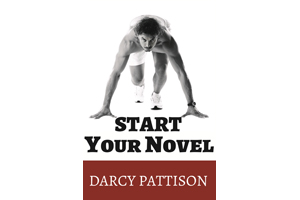
“Young man, don’t speak to me in that tone of voice!”
When you see that bit of dialogue, you know that a boy is talking sarcastically or disrespectfully. We understand that it’s not just the words said, but it’s how the words are used that conveys an attitude.
Humor, irony, satire, pleasantness, excitement, righteous indignation–the audience’s anticipated reaction is what determines the tone with which you write a particular piece. Goodnight Moon by Margaret Wise Brown has a soothing tone; Captain Underpants by Dave Pilkey has an irreverent, comical tone; Out of the Dust by Karen Hesse has a spare, restrained tone that matches the mood of the Dust Bowl.
I’ve been dealing with tone because I’ll have a nonfiction piece, “Don’t Lick That Statue,” in the June 2014 issue of Highlights Magazine for Children. When you turn in this type of manuscript, they require a letter from your sources that states the article is “appropriate in tone and content” for a young reader. Content is easy: just check and recheck your facts, ma’am. Tone is not so easy. What does it mean, anyway?
Definition of Tone of Voice
Tone is the atmosphere that holds a story together; it permeates the narrative, setting, characters and dialogue. It can also shape a reader’s response. In a mystery with a dark, gothic tone, the reader is meant to be on the edge of fear.Tone gives the author subtle ways to communicate emotional content that can’t be told by only looking at what words mean. We also need to look at connotations and how words work within the context of the story.
One of the first ways to get a handle on controlling the tone of voice is to look at the adjectives and adverbs within your story. Specific details can fill the reader’s head with clues about how to interpret the story, but without a physical voice. The tone can be cued by adjectives or adverbs: quietly, he said; angrily, he said; sadly, he said. More experienced writers can convey the same tone with connotations of words and not have to rely on these adverbs.
In other words, the missing words–quietly, angrily, sadly–are communicated by every tool in the writer’s arsenal. That’s a frustrating statement for beginning writers: it’s too abstract. Let’s make it a bit more concrete.
Creating Tone of Voice
Before you begin writing, you should have a tone of voice in mind, so you will be consistent. The tone of voice should shape the story at all stages.
The opening, especially, should begin with the right tone, so the reader knows what sort of story will follow. Descriptions, dialogue, or even first-person statements are all welcome. The opening scene should give the reader a feel for the book that will be consistent throughout. A dark, gothic mystery should never morph into an action/adventure or a fairy tale. Within the dark, gothic mystery, there is room for variation, but there are also boundaries for when it moves outside the right tone. Set your story’s tone early and stick with it.
Recognition and Consistency
Once you have something written that captures the character, the voice of the story and the tone of the story, then you must do two things. First, recognize when that voice and tone is present and working; second, learn to be consistent with the voice and tone.
Put the work aside for as long as you can stand it, then read it with an eye toward where the voice, tone and character are working or not working. Read it out loud, and pay attention to places where there’s a “bump” for some odd, almost indefinable moment. That’s probably a tone or voice problem. Changing mood is fine; changing tone is not. On a very simple level this means that you can’t start a story with a dreamy stream-of-consciousness and end with an action-packed thriller.
Consistency is important even when a story has multiple points of view. For novels that switch back and forth between male and female characters, the tone must still be maintained.
Crafting your Story’s Tone
While much of the discussion about tone of voice revolves around abstract issues, there are some concrete things that can be considered.
Choice of details. Choose the sensory details that bring a story to life. Does it matter that Dracula wears black? Of course! Be sure to include as many senses as possible, pulling in visual, auditory, tactile, olfactory and tactile details.
Plot and organization. Often, picture book stories have simple refrains—which present a reassuring tone by suggesting that there is order in the world. The organization of the text always returns to a phrase that is important; the child knows you’ll get to that point again in the story and feels the ordering of events in the story, which reinforces the tone.
Language and vocabulary. The language and vocabulary used must also support the tone of a story. Choosing the right word is paramount, but also consider how the words work in context. Connotations are words speaking to other words in a story. You may want to alliteration, assonance, or other literary techniques to make certain words resonate. But the technique should be subtle enough to work without calling attention to itself.
Dialogue. Dialogue can carry tone of voice, too. Avoid stilted and extended sections of talking heads. Instead, work for a snappy exchange—or whatever is appropriate for your tone. Sometimes, it helps to be intentional and say to yourself, “My story’s tone is XXX and that means my dialogue should be XXX.” Then evaluate to see where you need to adjust.
Write Your Story Your Way!
If all the above feels too abstract, if you want more detailed how-to instructions, if you have trouble recognizing voice much less tone of voice, you aren’t alone. Yet, editors and teachers of writing can’t be more specific. “It depends. . . ,” they say. It always depends on the story, the characters, the setting, the author’s intent, and so many other minor and major decisions about a story.
The tone is the end result, but it is also the beginning. The author must solve the problem of tone of voice in different ways for each story they tell. You have an arsenal of weapons: setting, characterization, language, rhythm, vocabulary, plot, organization. In the end, there are no right or wrong answers; there are only stories that work or don’t work.
Can you suggest stories that portray a certain tone? How would you describe the tone of IVAN, THE GREAT AND MIGHTY? Of HUNGER GAMES?
Blog: OUPblog (Login to Add to MyJacketFlap)
JacketFlap tags: Music, voice, singing, yoga, *Featured, Laura Davis, Arts & Leisure, yogi, rabhadrāsana, Add a tag
By Laura Davis
You know that stress dream that everyone has at one time or another? The one where you’re standing up in front of a giant group of people and something goes horribly wrong? You forget your speech, your voice cracks, you’re not wearing pants. Well that dream became a recurring reality for me my senior year of college (not the pants part thankfully). Mine was the singer’s nightmare. The one where you open your mouth to sing and the voice that comes out is not your own.
As a child and an adolescent I loved to perform. Singing wasn’t something I thought about; it was something I just did and as a result I was totally fearless. When I got to college the concept of thinking about singing as a science was entirely new to me. My teachers taught me to release my jaw and tongue, to inhale into my back and belly, to use muscular antagonism of the inspiratory and expiratory muscles, to keep my larynx low and stable, to lift my palate, and many other mechanics of singing. At first this new focus on technique was interesting, but eventually all of the technical language resulted in confusion. Every time I opened my mouth to sing I was afraid I would do something wrong. The result was a voice that was only a shadow of the one I used to call my own.
What happens when we’re afraid? In his article “The Anatomy of Fear,” John A. Call discusses the body’s reaction to fear: the heart-rate speeds up, our muscles tense, and the breath becomes fast and shallow.
The implications of this for a singer are huge. In singing the first rule of the inhale is release low. When a singer releases and expands through the lower body (belly, low back, and intercostals), it allows these muscles to work in tandem on the exhale. This gives the singer the ability to manage the air much more efficiently than if he/she had begun by expanding through the chest and clavicles. If a person is experiencing fear, the ability to take a low and relaxed or released breath becomes quite difficult.
Certainly singers need to learn proper singing technique, but sometimes I wonder, what is all of this focus on the physical costing us as artists? There was a time in my life when I operated solely on musical intuition. But as I learned more and more about the mechanics of singing I began attempting to operate on facts and science instead of artistic impulse. I don’t mean to suggest that I didn’t need to learn the mechanics—I had plenty of technical issues. But perhaps there is a more holistic approach to teaching singing that could facilitate proper technique without the loss of instinct.
After I graduated from college I took some time off from singing. When I decided to return to it I knew I needed a different approach. I had been practicing yoga as a form of exercise for a few years, but I felt confident that with the right guidance it could really help me as a singer. So I sought out a voice/yoga teacher.

Yoga session at sunrise in Joshua Tree National Park – Warrior I pose. Photo by Jarek Tuszynski. Creative Commons License via Wikimedia Commons
My new teacher, Mark Moliterno, taught me that yoga recognizes that tension in the body is often a result of physical or psychological blockages to the breath. The practice of yoga seeks to release tension and free the breath. When properly implemented in the voice studio, yoga can be a pathway to efficient vocal technique and artistic freedom.
Mark pointed out that all of the confusion and fear that had built up during my college studies had caused me to physically disengage from the lower half of my body. So we set to work using yoga to reconnect me with my lower body and help me feel more secure in my singing.
We used postures like Tādāsana or Mountain Pose and Vìrabhadrāsana One or Warrior One to release tension in the body and connect me with the ground. Feeling my leg muscles engaged and my feet planted firmly on the floor helped me to feel more secure. We used pranayama or breath exercises to release tension within the muscles of the respiratory system. We used hip openers to release the tension in my jaw, and shoulder openers to release the tension in my tongue.
We did yoga and made music. Not once in this entire process did I think about any of the mechanics of singing. My technique improved because my body was open and the breath could function naturally and efficiently. Yoga was like this miracle that freed my voice and allowed me to trust myself again. But it isn’t a miracle, it’s a science that takes into account all parts of the person, and not just the anatomical.
When singers start trying to function as anatomical machines, seeking after flawless technique, we can lose the ability to sing authentically. Yoga helped me to learn to sing with good technique without focusing on it, and dissolved the fear that kept me from trusting my musical instincts. It released the tension in my body and mind, unleashing the breath, and offering me a pathway to artistic freedom.
Mezzo-soprano, Laura Davis, is a singer, conductor, and voice teacher. She holds a Master of Music degree in Voice Pedagogy and Performance from the Catholic University of America and a Bachelor of Music degree in Sacred Music from Westminster Choir College. Recent performances include Suzuki in Puccini’s Madama Butterfly, Dina in Bernstein’s Trouble in Tahiti, and Third Lady in Mozart’s The Magic Flute. After spending 10 years on the east coast conducting, performing, and teaching, Ms. Davis has returned to her home state of Colorado where she is in the process of opening a voice studio based on a holistic approach to singing.
Subscribe to the OUPblog via email or RSS.
Subscribe to only music articles on the OUPblog via email or RSS.
The post Learning to sing: lessons from a yogi voice teacher appeared first on OUPblog.
Blog: Darcy Pattison's Revision Notes (Login to Add to MyJacketFlap)
JacketFlap tags: fiction, novel, character, voice, first page, first drafts, setting, how to write, opening page, Add a tag
 A cat says ________.
A cat says ________.A dog says________.
A skunk says______. (We don't know!) Watch this video to hear a skunk, a ground hog, a bison and more.
Withholding information
When a reader first opens your novel or story and reads the first line, the first paragraph, have you welcomed the reader and tried to put them at ease? It is imperative to invite the reader into a story in a way that puts them at ease. This means clarity must rule. The reader must never question where the story is taking place, or what—exactly—is happening in this scene. You do not have to spill all the backstory at this point—that doesn’t work. But the reader should know when, where and who and a hint of why.
Setting. The setting should be clear and specific, with sensory details appropriately sprinkled throughout the opening scene. This includes information on the geographic location, time frame (e.g. 6th century BC or 2017A.D), and something about the emotional territory.
Character. In the opening pages, the reader should meet a character that intrigues. Please, don’t name five characters on page one and expect the reader to stay oriented. Instead, give each important character a grand entrance. The inner life of the main character should start to come alive, as well. What does s/he fear, love, long for?
Cautions: The worse drafts hide information, wrongly believing that just giving a hint here or there is the best strategy. Instead, the reader becomes confused and closes the book, never to open it again. The great sff writer Orson Scott Card wisely said, “The only thing to withhold is what happens next.” Within the context of a scene, this is exactly right. The reader should understand exactly what is going on—and be so enthralled that s/he turns the page to find out “what happens next.”
Don’t use this as an excuse to include backstory, though! Backstory comes ONLY at the point at which it will create an emotional crisis in a reader. Instead, when the reader is deep within a scene, they should only care about what happens next.
Voice is too formal
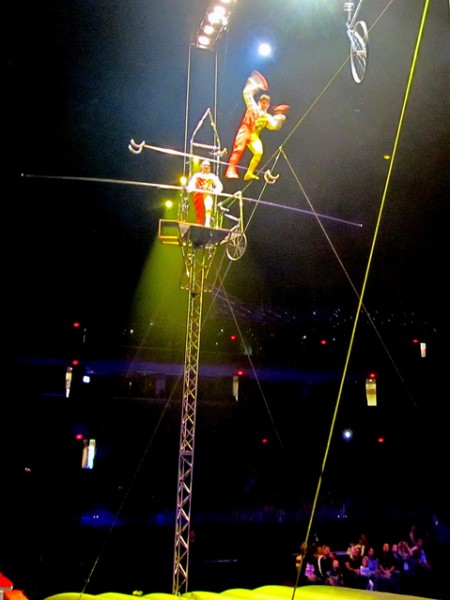 In the search for a great voice, some writers fall back on their English class and write too formally. Great fiction is informal writing. This means you can use slang, jargon, curse words (when appropriate), incomplete sentences, sentence fragments. You can, and should, interrupt someone when they are speaking. Characters can be rude. A great novel is not a tea party! Stop being so polite, so formal.
In the search for a great voice, some writers fall back on their English class and write too formally. Great fiction is informal writing. This means you can use slang, jargon, curse words (when appropriate), incomplete sentences, sentence fragments. You can, and should, interrupt someone when they are speaking. Characters can be rude. A great novel is not a tea party! Stop being so polite, so formal.
Try making up rules for yourself–play with the formality of your novel; keep what works and discard the rest. Don’t like my rules? Make up your own. But play!
- For every ten sentences, you must use a sentence fragment.
- You must use one slang/jargon word per page.
- You will write one section of dialogue (about 10 exchanges) and every bit of dialogue is incomplete sentences.
- In every chapter, someone must be rude.
Boring
Yawn. What happened in this chapter?
Nothing.
Then, why is the reader turning pages?
They aren’t!
A good exercise is to go through each chapter and write one sentence that summarizes what happens. Something important must develop or change in some way in every single chapter. Novelists do not have the luxury to stop and give us back story or tell every single detail of the setting. You must pick and choose from among the myriad of details, bits of dialogue, actions, thoughts and arrange them in an exciting, fascinating, intriguing order.
Stoic Character
For every action, your main character should have an emotional reaction. Why else is the reader following this character around? OK. Not every single action. But it’s a good exercise to try: underline the actions, and circle the main character’s emotional reaction to what just happened. How do they correlate? Do we have 100 actions and only one emotional reaction? Where ever you are on the continuum from no emotional reaction to 100% emotional reactions, evaluate it in terms of your character, your novel. Is the reader getting enough of your MC’s inner life to keep turning the pages? From my experience as a first reader, most novelists err on the side of not enough emotion. If this is hard for you, push yourself toward too much emotion and you may wind up about right.
Balance
Writing a novel is a continual decision-making process. For each detail you might include, there are dozens of great ways to put that into words. We go from words to sentences to paragraphs—and each word selection carries connotations and denotations. It’s complex! The variety of ways to tell a story are amazing. What scenes do you include/exclude, and why? What character is the main character? The point of view character?
Throughout the process of writing a novel, it’s a balancing act all the way. We walk a tightrope upon which we build a story. One misstep and the reader falls off.
This is one of the main reasons why first pages go wrong. 90% of a story may be working, until a sentence here, a word there, a questionable emotion in the midst of the scene—and the reader puts the book down. Fine tuning the novel is crucial. Here is where first readers can really help, by marking the places that are “off.” Even if they can’t articulate WHY this section is OFF, they know it when they read it. You don’t want an English teacher marking up the story with red marks. You want a sensitive reader saying, nope, this doesn’t fit. Don’t know why, just know it doesn’t fit.
It’s a matter of balance: every word must belong. Nothing must be out of place. The reader must keep turning pages with no interruptions in the flow.
Blog: Darcy Pattison's Revision Notes (Login to Add to MyJacketFlap)
JacketFlap tags: voice, literary device, deus ex machina, alliteration, trope, anastrophe, melissa donovan, scheme, Add a tag
Follow our Pinterest Boards
When I first learned about alliteration in a writing class, I couldn’t believe there was a word for it. I used it in my poetry all the time! Then I learned about anastrophe and deus ex machina and I began to discover a whole world of literary devices and techniques.
Alliteration is the repetition of initial consonant sounds of accented syllables in a phrase: dancing dragons.
I discovered literary techniques that I’d seen in storytelling but hadn’t used in my own work. For example, anastrophe is when the usual word order of a sentence or phrase is reversed. One of the most famous characters in the movies speaks almost exclusively in anastrophe: Yoda doesn’t ask “Are you ready?” He says, “Ready are you?”
 There were also literary devices that I’d neither noticed nor used. Deus ex machina is when a character or event is suddenly introduced in a narrative for convenience. For example, when all the main characters are trapped and some long-lost cousin who has never been mentioned suddenly appears and rescues them, this is deus ex machina, and it’s usually seen as a cheap way to resolve a sticky situation.
There were also literary devices that I’d neither noticed nor used. Deus ex machina is when a character or event is suddenly introduced in a narrative for convenience. For example, when all the main characters are trapped and some long-lost cousin who has never been mentioned suddenly appears and rescues them, this is deus ex machina, and it’s usually seen as a cheap way to resolve a sticky situation.
What Are Literary Devices and Techniques?
So what are literary devices and what applications do they have for writers?
Wikipedia defines a literary device as follows: “A literary technique (also known as literary device) is any standardized method an author uses to convey his or her message.” According to Wikipedia, this can include foreshadowing, flashbacks, and plot twists, things we all recognize as elements of storytelling.
I’ve found some resources that make a distinction between storytelling techniques, which deal with the structure of a story, and language techniques, which deal with how we choose and use words.
Understanding and Identifying Literary Devices and Technique
Have you ever come across a word, phrase, or sentence that mesmerized you, but you couldn’t figure out why? It might have been a line of dialogue that stuck with you or a compelling scene in a story. You know there’s a reason it was so effective but you can’t put your finger on it.
In these cases, there’s a good chance a literary device or technique is at play. And if you can identify these devices and techniques, you’ll gain a better understanding of how to make the best possible decisions in your own writing.
For example, we all know there are a dozen ways to write a sentence. If we’re trying to choose the right word for a sentence and there are several to choose from, we might make our decision based on a literary device.
Let’s look at an example. In the sentences below, would you choose the word store or market?
I have to stop by the store.
I have to stop by the market.
I would probably choose store because of the alliteration that occurs with the words stop and store.
While this is something a lot of writers do naturally—choose a word because it’s the one that sounds the best—it’s immensely helpful to have a more concrete reason, to know that you’re choosing a phrase because it applies alliteration rather than “just because it sounds good.”
When we adopt literary devices and techniques into our vocabularies, we can talk about writing, language, and story more efficiently and intelligently.
Using Literary Devices in Your Work
Let’s say you’re working on a novel and trying to polish a sentence that’s giving you trouble. You’re looking for the right word—the perfect word. If you have studied literary devices, then they are at your disposal and can help you make smarter choices about which words and phrases to use.
Literary techniques can also be immensely helpful in storytelling. When I’m working on a story and get stuck, I often turn to a list of storytelling techniques to see if any of those techniques could help me get unstuck. I almost always find a solution, something that propels me past whatever obstacle I’m facing.
Literary devices and techniques are valuable tools that we can use to better understand literature. By applying these concepts to our own writing projects, we can strengthen our work and make it more compelling.
READ MORE
Fiction Notes has posted before on How to Use Words: 8 Literary Devices, How to Arrange Words: 20 Literary Devices and How Winston Churchill Used Literary Devices. (That’s 28 literary devices to study and use in your next piece of writing!)
About the Author: Melissa Donovan is the founder and editor of Writing Forward, a blog packed with creative writing tips and ideas. She has also authored a book of creative writing exercises and works as a web designer and copywriter.
Blog: TWO WRITING TEACHERS (Login to Add to MyJacketFlap)
JacketFlap tags: biography, voice, process, Tanya Lee Stone, mentor texts, introduction, Marjorie Priceman, Dr. Elziabeth Blackwell, Add a tag
Who Says Women Can’t Be Doctors? The Story of Elizabeth Blackwell is an expertly crafted biography that can be used to teach students a variety of craft moves during a biography writing unit of study.![]()
Blog: Just the Facts, Ma'am (Login to Add to MyJacketFlap)
JacketFlap tags: writing, voice, Add a tag
What do editors mean when they say they are looking for a strong, unique voice?
http://www.bobbimillerbooks.com/on_voice.html
Blog: Caroline by line (Login to Add to MyJacketFlap)
JacketFlap tags: what I am reading, GONE GIRL, creativity, voice, craft, recommended reading, Donald Maass, reading and writing, Cheryl Klein, reading update, Add a tag
One of the things I think has made Gillian Flynn's GONE GIRL so successful is voice.
Voice is always one of those tricky things. Scholastic editor Cheryl Klein defines it "by using the formula VOICE = PERSON + TENSE + PROSODY + (Diction + Syntax + Tone + Imagination + Details). Defining the imagination of Voice, Cheryl says, '[t]he imagination of a voice sets the range of subjects, images, diction, kinds of and examples of figurative language, and references that the voice can include.'”
Agent and author Donald Maass says voice is "the thing...every novelist already has... . It may be comic, deadpan, dry, pulpy, shrill, objective, distant, intimate, arty or a thousand other things. It comes through in the story that an author chooses to tell and the way in which they choose to tell it."
Here are some quotes I highlighted while reading GONE GIRL. You'll notice they're not big statements on the plot (except for the last one, which sums up the entire story in all its twisted wonder), but tiny observations -- metaphors used to paint a picture of characters, of setting, small things that were fresh and interesting and right. In other words, great examples of voice.
characterization and metaphor:
"They have no hard edges with each other, no spiny conflicts, they ride through life like conjoined jellyfish -- expanding and contracting instinctively, filling each other's spaces liquidly. Making it look easy, the soul-mate thing." (p 27)
setting and metaphor:
"It was the best time of day, the July sky cloudless, the slowly setting sun a spotlight on the east, turning everything golden and lush, a Flemish painting." (p 31)
characterization:
"His shirt wasn't wrinkled, but he wore it like it was; he looked like he should stink of cigarettes and sour coffee, even though he didn't. He smelled like Dial soap." (p 33)
characterization and metaphor:
"He spoke in a soft, soothing voice, a voice wearing a cardigan." (p 199)
and the quote that sums up the entire crazy ride:
"Our kind of love can go into remission, but it's always waiting to return. Like the world's sweetest cancer." (p 392)
Have you read GONE GIRL? What were your impressions? Any other authors or books that get voice just right?
Blog: Darcy Pattison's Revision Notes (Login to Add to MyJacketFlap)
JacketFlap tags: career, voice, genre, novel revision, build a career, Add a tag
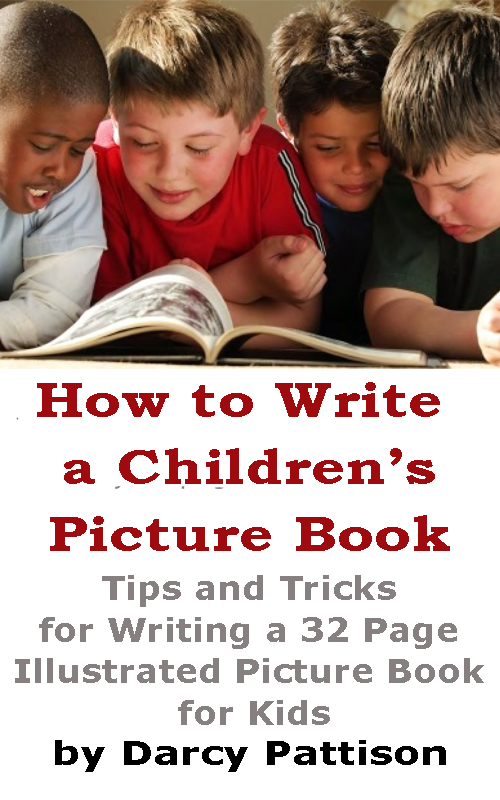 |
Reading would be boring, except for the person behind the writing. YOU make it interesting. Your voice.
Even the federal government recognizes the importance of YOU: ideas can’t be copyrighted, rather, the particular expression of an idea. What you copyright is your voice. You.
This means several things:
Voice. As you write, be aware of your particular ways of thinking, of what you notice, of how you express what you notice. Try to foster those interests and expressions. Of course, this isn’t a call to be sloppy in grammar or word usage or sentence structure. Just as a jazz player plays a riff on a song, so you must experiment in your writing, while still making sure the song is recognizable.
Match voice to genre. Your voice–who you are–will also determine the types of writing at which you can excel. Nonfiction or fiction, horror or romance–you need to find a place where your voice fits naturally and allows you to exploit your voice. Experiment with genre, style, length, and venue (online v. print, for example), to find the “highest and best use” of your strengths.
Editors. We all need feedback and early editors. Be careful, though, of line editors, those people who think something must be said their way. Unless they are extremely skilled, line editors mess with voice. And you must not allow that.
Stick with a genre, character, series. If and when you find that sweet spot, stick with it. Careers are built on returning readers, who become fans, who faithfully buy everything you write and furthermore, they tell friends to buy them and they give your books as gifts. Early in your career, don’t worry about bouncing around and writing everything you might want to write. If you are lucky enough to find success in one area, stay there long enough to build a readership that you will take with you to the next step.
You. Your lens, the way you see the world, the way you express what you see–that is what keeps reading from being boring. Let me see the world the way YOU see it. And I’ll keep reading you.
Blog: The Bookshelf Muse (Login to Add to MyJacketFlap)
JacketFlap tags: guest post, voice, Add a tag
I am so pleased to welcome Shannon Messenger to the blog today! Shannon is a wonderfully supportive writer who is doing big things in the kid lit world.
Not only is book 1 of her MG series, Keeper of the Lost Cities
Shannon's got some great advice here about Voice in Kidlit, so please read on.
Yay--I'm so excited to be here! I've been a huge fan of this blog for years, so it's such an honor to contribute. Here's hoping I can live up to the amazingness of the other posts you guys are used to reading.
I thought I'd talk today about writing kid voice, since that seems to be the subject that comes up most often when people find out I write middle grade. In fact, usually the first question people ask is something along the lines of: do you have to simplify things when you write middle grade?
And my answer is always an emphatic: NO!
Kids deserve way more credit than some people give them. They are very smart and pick up on much more than we may think they do. So I have never once had to change a word because it was "too advanced" or dumb something down so a kid reader would understand it.
That being said, there is still a definite "kid voice" that needs to be used when writing middle grade. But it's not about simplification. It's about making your writing appealing and relatable to kids. A big part of that will come from the voices of the kid characters themselves. But still, it does trickle into the prose in ways you might not always think of.
For example, look at the following sentences:
Which feels more authentically "kid" to you--comparing something to the color of coffee or the color of chocolate? That's not to say that kids don't understand what color coffee is. Shoot, these days lots of kids even drink it. HOWEVER, I still think it's much more believable that a kid would compare the color brown to chocolate long before their mind would come up with coffee. Coffee feels like a more adult comparison. Which is the same reason I removed "business" from the second sentence. Adults think of "business suits." To kids it's just a suit.
They're very subtle differences. But throughout a draft they can really add up and give the story a more authentically kid voice. And obviously the voice of the character also needs to be considered. If your main character is a big coffee drinker, the coffee comparison would probably be the more appropriate. For things like that you will need to use your own judgement. But as a general rule it's best to try and weed out anything that reads more "adult-centered" from your middle grade manuscripts, because they will make the story feel less relatable to your readers. Not that they won't understand it. It just won't feel like it's speaking to them.
And it's important to keep in mind that this kind of thing can rarely be perfected in the drafting stage. Of course the more you write for kids the more you will start to internalize that voice. But as an adult your brain is going to naturally gravitate toward these kinds of phrasings and comparisons. So it's something you'll really want to train yourself to watch for as you revise.
I'm a big believer in questioning every word. It's tedious and obnoxious and kind of makes you want to fling your laptop off a bridge. But it's also the only way to really watch for tiny voice issues like this, so it's really worth the extra effort. And just when you think you've found them all, your editor will flag a few more and you'll feel like, ARGH HOW DID I MISS THAT????
Oh the joys of being a writer. :) All right, I think I have rambled on long enough. Hope you guys found that helpful. I now happily turn this blog back to it's rightful owners. Huge thanks to everyone who stopped by to hang out. *curtsies* *flees*
SHANNON MESSENGER graduated from the USC School of Cinematic Arts where she learned that she liked watching movies much better than making them. She also regularly eats cupcakes for breakfast, sleeps with a bright blue stuffed elephant named Ella, and occasionally gets caught talking to imaginary people. So it was only natural for her to write stories for children. Keeper of the Lost Cities is her first middle grade novel. Let the Sky Fall, a young adult novel, will follow in Spring 2013. She lives in Southern California with her husband and an embarrassing number of cats.
Follow Shannon: Blog | Twitter | Tumblr | Facebook | GoodReads | Pinterest
Wow! I was nodding all the way through--as kidlit writers, it is so important to know our audience and write authentically so it feels like they've stepped right into the mind of the child protagonist. Thank you so much Shannon for hanging out here and giving such food for thought on Voice as this is one of the biggest struggles we face writing for this age group!
Shannon is taking over the internet as she introduces her fabulous books to the world, so check in at Mundie Moms for the complete tour schedule, which is packed with giveaways. Oh, did I say giveaways? Yes I did! Fill out the below for a chance to win your very own copy of Keeper!
a Rafflecopter giveaway
Blog: Utah Children's Writers (Login to Add to MyJacketFlap)
JacketFlap tags: voice, description, writing rules, 10 Commandments, Add a tag
By Julie Daines
Writing Conferences. We go. We listen. We obey. Maybe sometimes we obey too much.
My next few posts will be about when to break the writing commandments.
From the first bite, the rich, chocolate cake saturated his tastebuds with mouth-watering flavor.
The chocolate cake was delicious.
The object of avoiding the use of the word was is not to write forced prose, it is to use a stronger, better, more descriptive verb. So try to replace was with something better.
The chocolate cake tasted delicious.
Mack loved that chocolate cake from the first bite.
The sun beat down on the road. When I opened my car door, the heat assaulted me, wrapping its burning fingers around me and choking me. The hot asphalt attacked my bare feet trying to burn its way through my skin.
If Cami just ran out of gas in the middle of the desert and she faces imminent death by heat stroke, then this example is ok.
If all you want to do is get across how hot it is when Cami pulled up to the swimming pool, then keep it simple and direct--even if it means using was.
By the time Cami pulled up to the swimming pool, it was beyond hot.
- Use was, but only when it's the best and simplest way to get your point across. Sometimes, there is no better substitute.
- If you can, use a stronger verb in its place or rewrite the sentence.
- When you need to describe something important, pull out all the stops and elaborate--always keeping in mind the YA or MG voice.
View Next 25 Posts










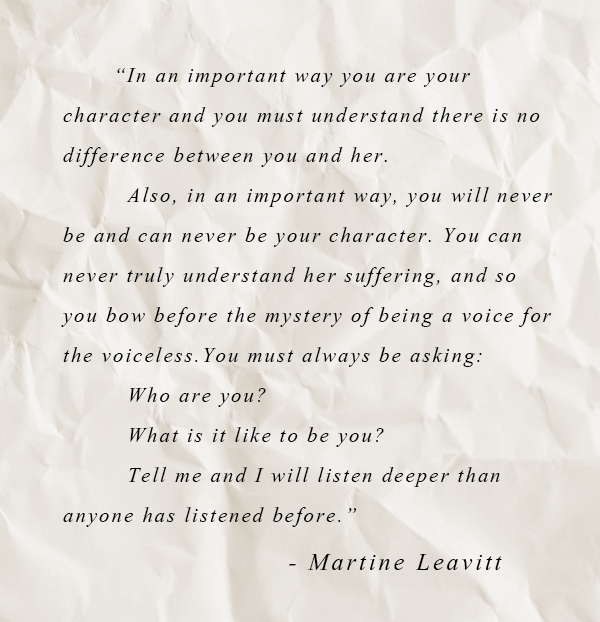



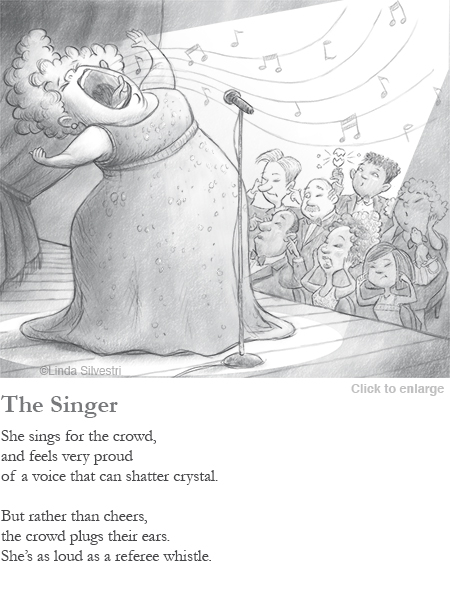








Darling!
This is great one. Love the audience reaction.
I always enjoy seeing your illustrations, Linda.
Thanks, Lorlinda!
Thanks Madre!
Aww, how sweet of you to say! Thanks, Kathy!